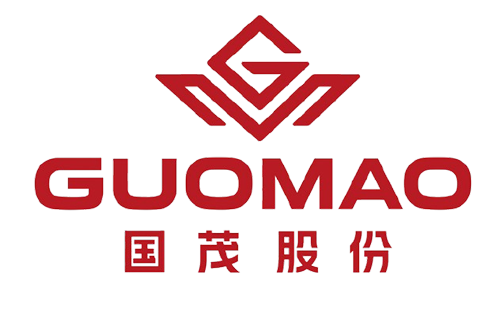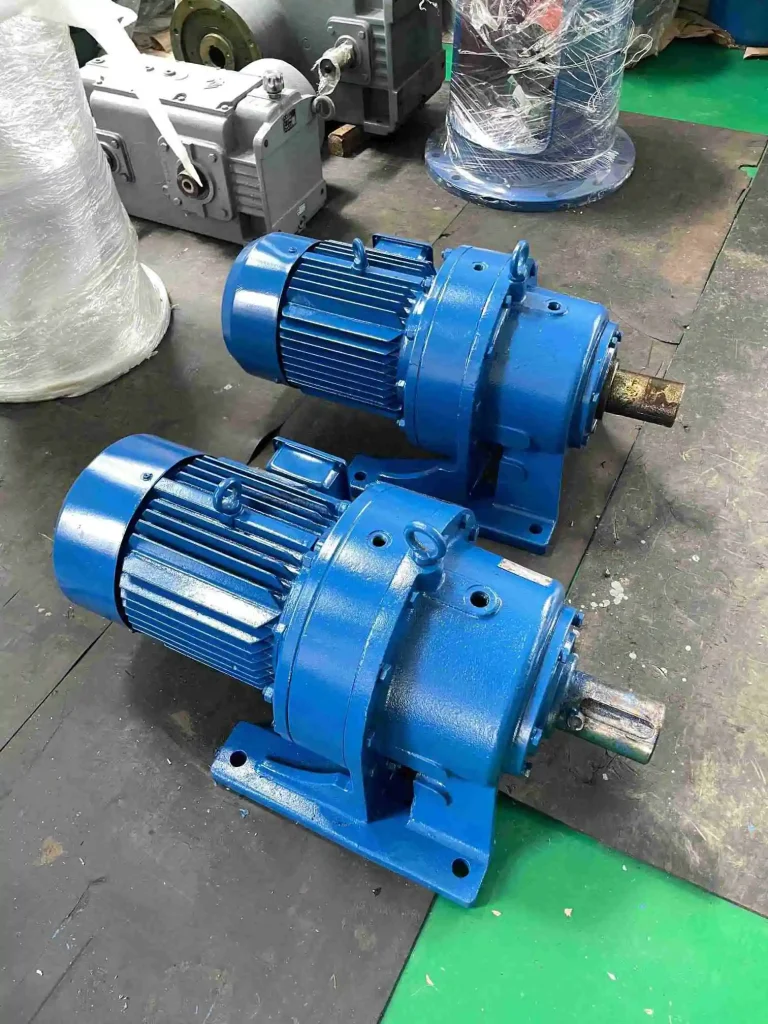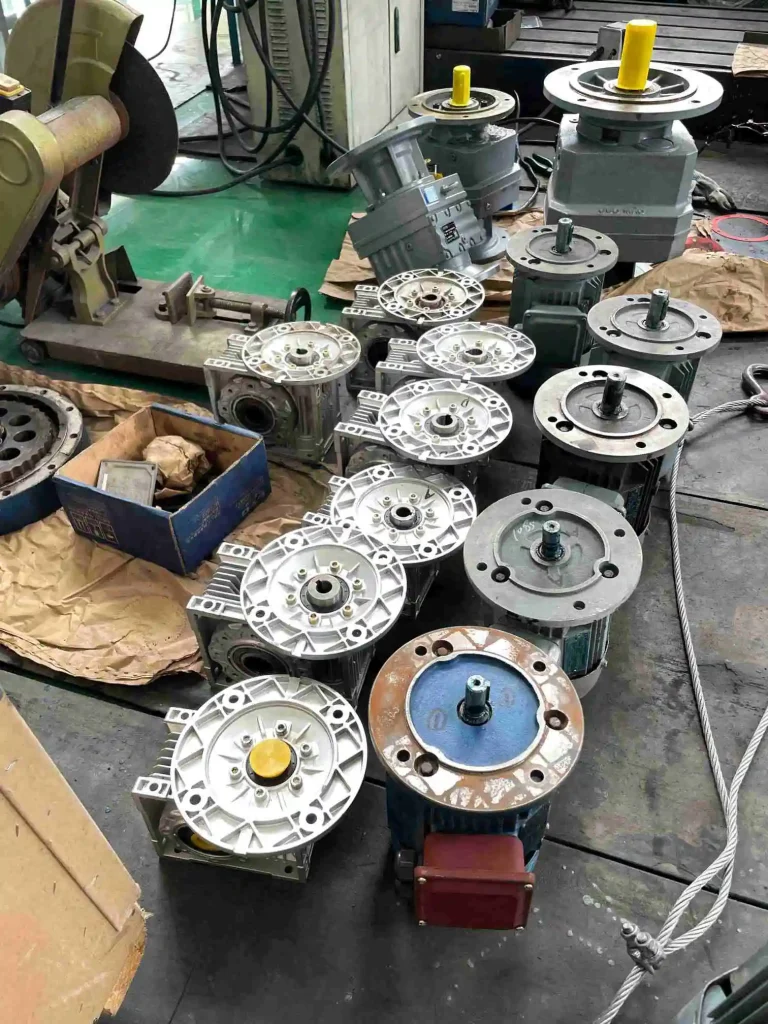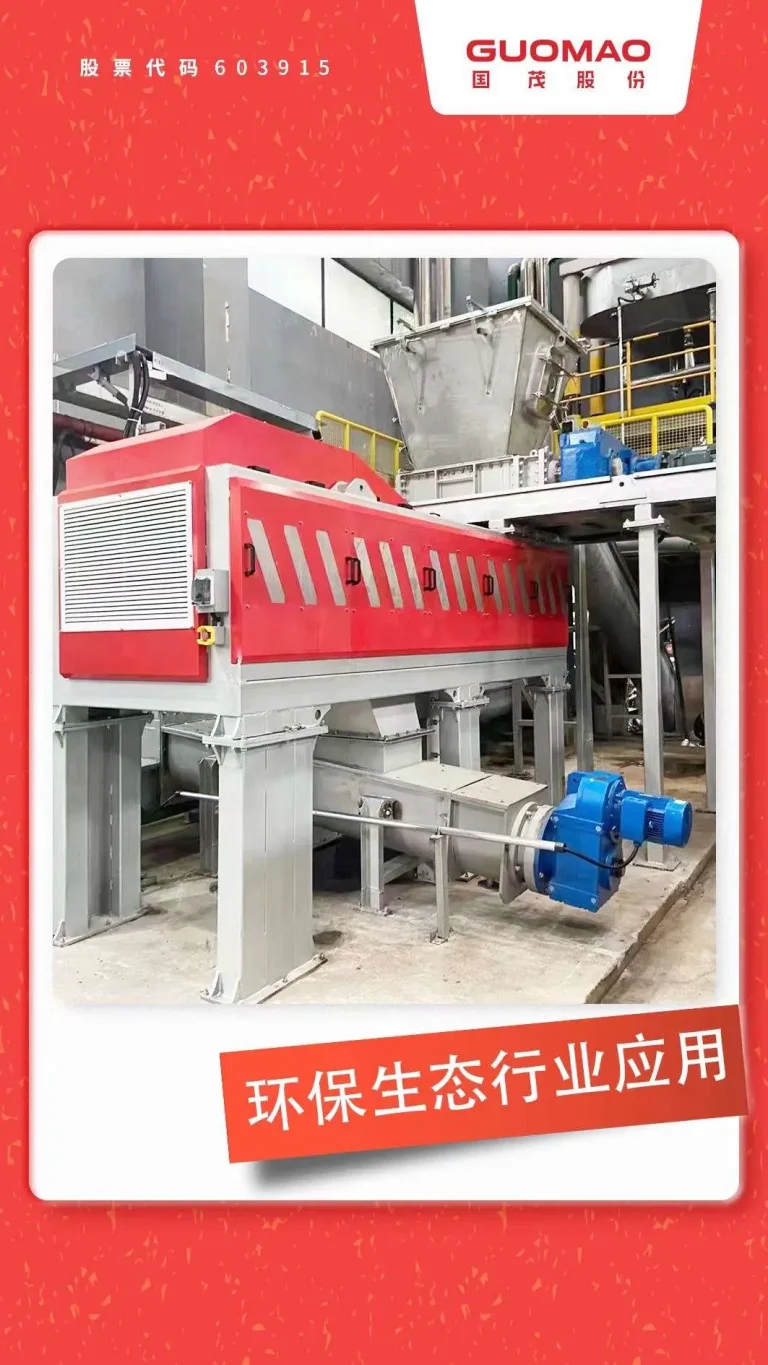Noise and vibration count as the main problems in factory gear setups. A solid 2-stage helical gearbox allows for smoother and quieter operation. But this works only if each choice in the design fits well. Based on our work in engineering at Guomao, this piece shows how a 2-stage helical gearbox cuts noise and vibration. The methods make sense and can be checked by engineers, buyers, and machine makers.
How a 2-Stage Helical Gearbox Works and the Origins of Vibration
The transmission principle of a 2-stage helical gearbox
A 2-stage helical gearbox slows speed and boosts torque with two sets of helical gears in a row. Helical gears touch along the tooth side bit by bit. They do not hit all at once. So, they spread the weight better and cut sharp hits. In a setup with two stages, the full torque shake gets less than in one stage. This lowers the start of vibration.
The split of slowdown over two gear touches means each touch takes smaller, quicker changes in weight. This helps hold back fast torque jumps. Those jumps can stir up part modes and cause echoes if not checked.
Sources of noise and vibration in helical gear systems
Vibration in gearbox setups comes mostly from a transfer mistake. This is the quick gap between the real turn spot and the perfect paired move. Transfer mistake stands as one key way to start gear noise and vibration.
Changes in mesh firmness during each gear touch also bring moving loads. When firmness shifts along the tooth side or between touch pairs, it makes force ups and downs. Those ups and downs travel through the shaft setup.
Once those steady forces hit the gearbox case, they make the case shake and send out sound. The case turns into a next noise maker. To cut this, engineers need to lower both the start at the gear touch and the path through bearings and the case.
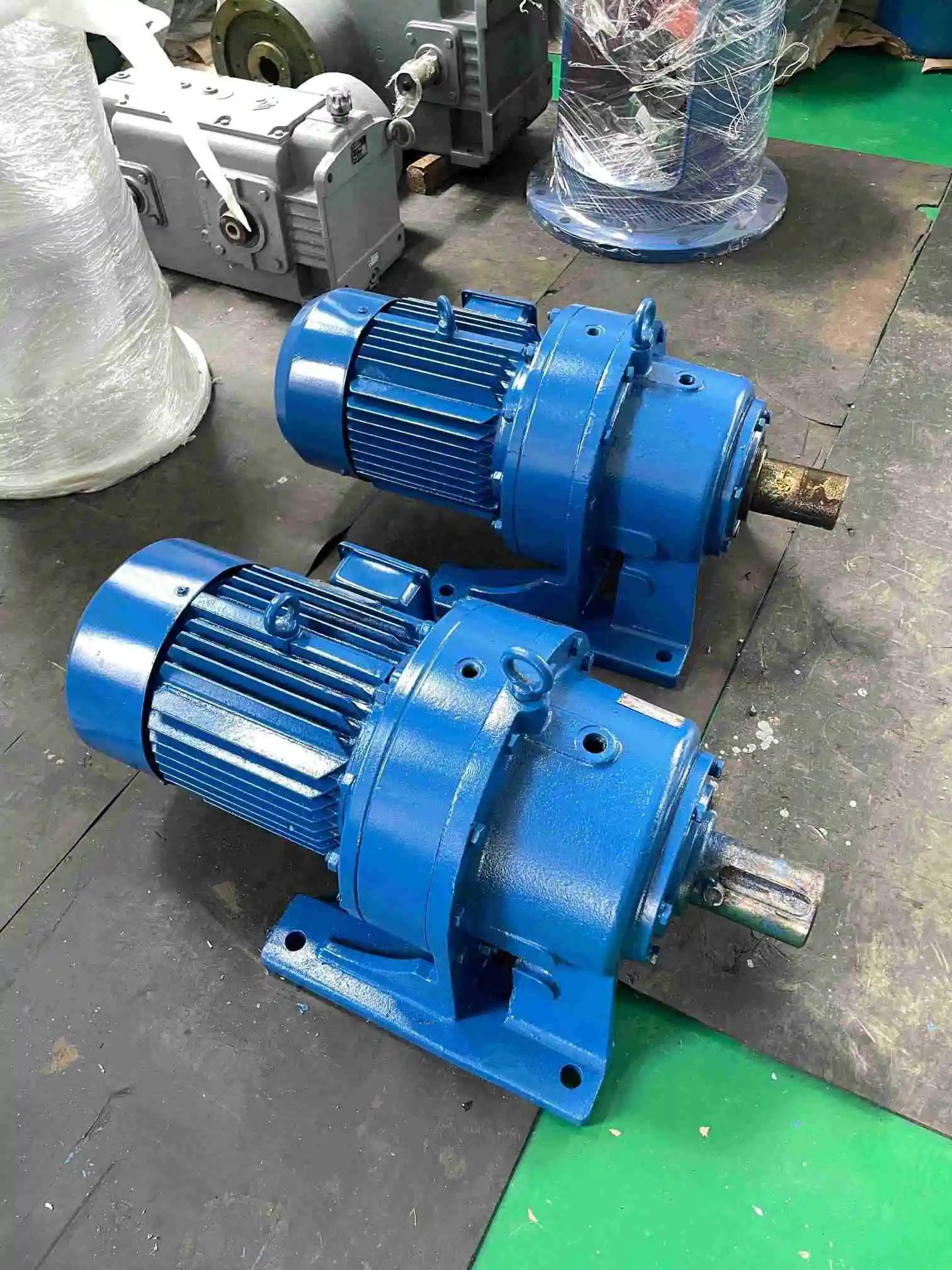
Design Strategies for Noise Reduction: Gear Geometry, Material, and Lubrication
Gear geometry tuning for vibration suppression
One good way to cut vibration is to raise the overlap number. This is the count of teeth in touch at the same time. A bigger overlap number means the torque moves over several teeth. So, power goes smoother with fewer hits.
A bigger contact number also spreads weight better. It cuts moving starts. In real use, exact changes like tip ease, rounding, and shape fix help keep tooth touch steady. They cut the edge weight, too. These shifts lower quick stress changes. Such changes cause steady gear noise most of the time.
When set right, the mix of overlap number fix and side change can drop the noise strength a lot. This happens in a gearbox that runs at middle to fast speeds.
Material choices, surface treatment, and finishing
Material and side quality change firmness and rub action. Guomao picks strong alloy steel. It gets hardened, heated fast, and ground exactly to grade-6 level. This keeps a steady transfer of work and long use time.
Side roughness counts too. A smooth ground tooth side cuts a small slide rub. That rub can turn into the sound you hear. Finish steps like shot-hit and even finish cut left stress. They make the side smoother. This adds to the quiet gear run over the years.
Lubrication design as a damping mechanism
Good oil setup matters for both long hold and noise watch. A kept oil layer acts as a liquid brake. It takes a shake between the tooth sides. Steady thickness stops small slides and holds back high-pitched talk.
Guomao 2-stage helical gearboxes often use oil soak or push-flow oil setups. This fits the work cycle. Keeping oil heat and moving steadily holds gear firmness. It makes sure the run stays quiet.
| Parameter | Recommended Range | Effect on NVH |
| Oil Viscosity Grade | CKD 220–320 | Reduces metal contact and mesh noise |
| Oil Film Thickness | ≥ 1 μm | Damps vibration and limits frictional chatter |
| Circulation Pressure | 0.1–0.4 MPa | Stabilizes flow and prevents air entrainment |
| Operating Temperature | ≤ 90 °C | Maintains viscosity and consistent sound level |
Structural and Mounting Tactics for Vibration Control
Optimizing bearing support and isolation
Bearings hold shafts up. They also sent a shake to the case. Picking the right bearing firmness, press load, and joint plan matters a lot. A system that’s too hard sends noise straight through. One too soft brings the wrong line-up, and the next shakes.
At Guomao, engineers check the bearing and case firmness as one. This skips echo spots. When needed, rubber joins or shake cutters come in. They split the case shake from the near parts. This fits the exact gear or inside spots best.
Housing layout and acoustic design
The gearbox case acts as a shake spot. Guomao’s cases use strong cast iron. They have set rib spots and changed the wall thickness to shift natural turns away from the start bands.
Design parts include:
- Rib hold grids to make the big sides stiff
- Side shape that does not match to break steady waves
- Brake covers on the inside sides for sound energy take
These ways together lower the sound sent from the gearbox side. They cut the run noise. Strength stays the same.
Multi-physics simulation and design verification
New gearbox build uses end part check and shake-sound model. By joining the move and sound plans, engineers can guess which case spots will shake hard. They fix them before making.
At Guomao, each new gearbox kind gets a model check. Then, real shake and noise tests follow. This makes sure every made unit hits hard NVH rules under the set weight and speed.
Industrial Cases: Noise-Optimized 2-Stage Helical Gearboxes in Action
Heavy-duty applications: conveyors, hoists, and processing lines
In hard work spots like move or lift setups, both torque hold and sound steady count. Guomao’s GR Series Helical Geared Motor and GF Series Parallel-Shaft Helical Geared Motor hit low noise and high torque. They mix exact-ground helical gears, part cases, and set bearings.
These gearboxes see wide use in move machines, cranes, bucket lifts, and mixers. In one inside test job, a change from spur-gear slow-down to a Guomao two-stage helical unit cut shake strength to under 1 mm/s RMS. The run got much quieter at full weight.
Low-speed, high-torque systems
In slow-speed jobs like mud cleaning or mix gear, turn shake is a usual shake start. Guomao’s set tooth shape and weight balance cut turn echo. This makes the start and stop smooth. The better brake also cuts tired stress on the joint gear. It makes bearings and joints last longer.
Monitoring, maintenance, and retrofit strategies
Noise watch needs to keep up. Guomao suggests steady shake watch with speed tools near bearings and out shafts. This tracks the main turn bands. Shift from base waves can show wear or wrong line early.
When updating old setups, engineers can add brake sides, change join firmness, or raise the set oil and cool setups. Such raises can make noise work better a lot. You skip the full trade of the send system.
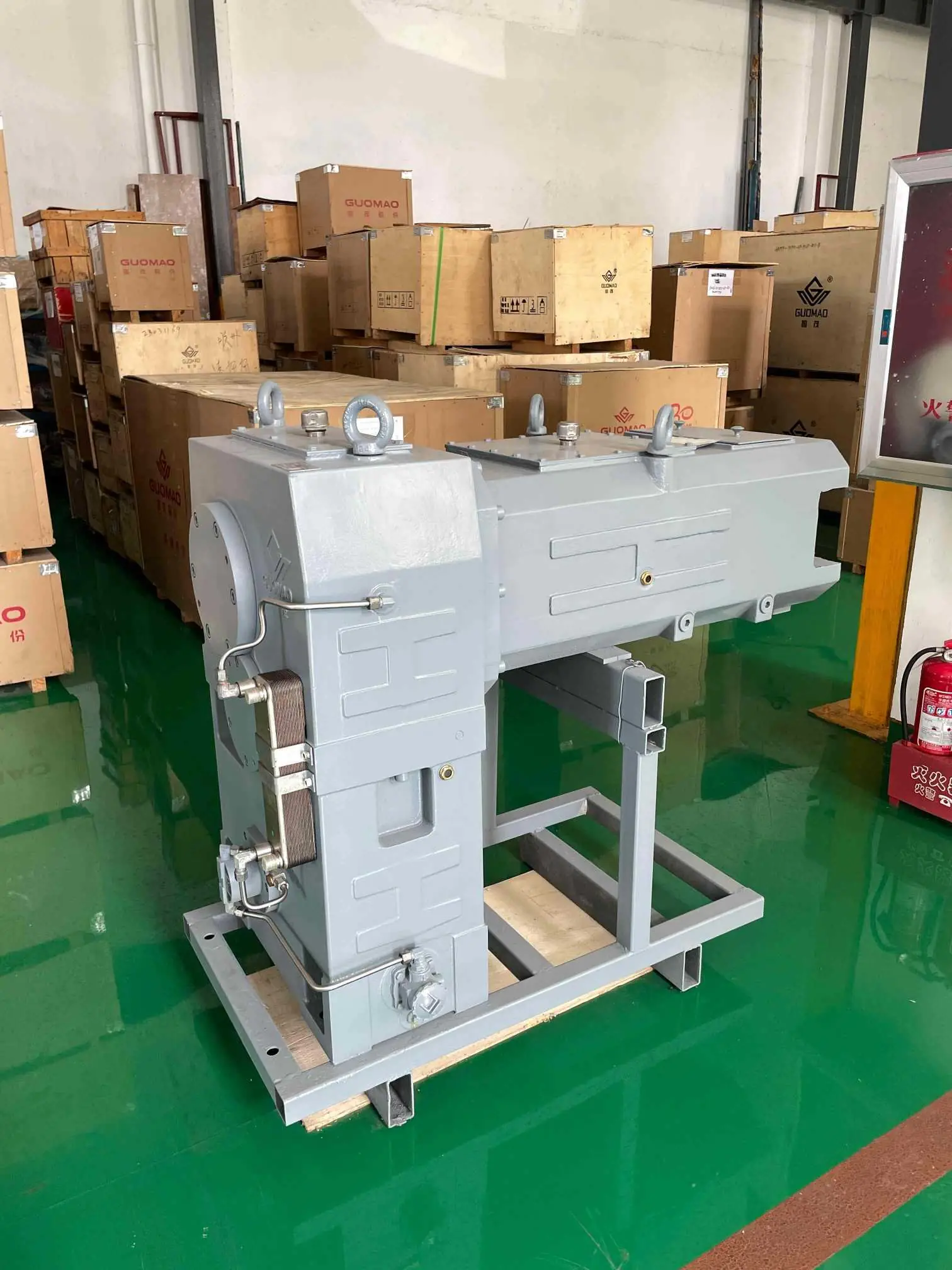
Guomao’s Expertise in 2-Stage Helical Gearbox Noise and Vibration Control
Our approach and core strengths
At Qingdao Guomao Lide Transmission Equipment Co., Ltd., we focus on studying, tailoring, and making 2-stage helical gearboxes. We share over 30 years of tech know and a 530,000 m² manufacturing base.
Our strong points include:
- High-precision gear machining (grade 6–5 accuracy)
- Modular configurations adaptable to multiple industries
- Low-noise design, through optimized tooth contact and structural damping
- High transmission efficiency (≥ 95 %)
- Long service life, reaching 25,000 hours or more under rated conditions
Product lines and customization
Our two-stage helical gearbox range (GR, GF, GK series) covers:
- Power range: 0.12 kW – 200 kW
- Ratio range: 1.26 – 33,000
- Maximum output torque: up to 50 kN·m
You can get them in foot-set, side-set, and shaft-set types. They fit many set spots. Buyers can ask for tailored oil setups, cool paths, or extra brake ways set to work needs.
Quality assurance and NVH testing
Each gearbox gets a weight, shake, and noise check before sending. Guomao runs under the ISO 9001 quality rule, with full track through make. Our set NVH lab makes sure every gearbox hits sound-push and shake goals. This keeps steady work in hard factory spots.
FAQ
Q: How does a 2-stage helical gearbox reduce noise compared with other designs?
A: The helical gear’s angled teeth engage gradually, ensuring smoother torque transfer. A two-stage configuration divides the reduction into two smaller steps, lowering mesh force variation and reducing structural vibration and airborne noise.
Q: What should engineers evaluate when selecting a quiet gearbox?
A: Focus on transmission error, housing stiffness, gear accuracy class, and measured noise level. Request vibration and sound-power data from the manufacturer. Reliable suppliers like Guomao provide verified NVH testing results.
Q: How can maintenance help sustain low noise performance?
A: Replace lubricants regularly, monitor oil cleanliness and viscosity, check shaft alignment, and inspect bearings for wear. Consistent lubrication and correct preload are crucial for maintaining quiet operation.
Q: What is the main difference between a 2-stage helical gearbox and a precision planetary reducer in noise behavior?
A: A 2-stage helical gearbox provides smoother torque transfer for continuous heavy-duty use, while planetary reducers are optimized for compact, high-precision applications. For large industrial systems, the helical design typically offers better acoustic stability and easier maintenance.
Q: Which industries benefit most from low-noise 2-stage helical gearboxes?
A: Sectors such as material handling, hoisting, wastewater treatment, food processing, and chemical manufacturing. Reduced noise improves reliability, extends equipment life, and creates a safer, more comfortable work environment.

